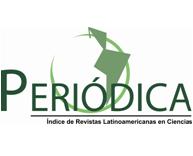CONTAMINATION IN SURFACE AND WASTEWATERS PRODUCED BY ANTIDEPRESSANT DRUGS: TREATMENTS USED
Keywords:
antidepressant, degradation, metabolism, physicochemical properties, water treatmentAbstract
Introduction:
Antidepressants have become emerging organic contaminants present in various water sources. However, conventional treatment systems are not able to efficiently eliminate these contaminants, which is a great concern in the environmental field. Although it has been proven that it is possible to eliminate a significant percentage of selective serotonin reuptake inhibitor antidepressants in the laboratory, due to their physicochemical characteristics and their behavior in complex mixtures in bodies of water, it has not yet been possible to eliminate them, showing great persistence, representing a future risk.
Objective:
To provide an update on the water treatment technologies used to remove selective serotonin reuptake inhibitor antidepressants from water bodies and their efficiency.
Materials and Methods:
A search of scientific publications focused on selective serotonin reuptake inhibitor antidepressant drugs, their metabolism, physicochemical properties and treatments was carried out.
Results and Discussion:
Advanced oxidation processes are the main technologies applied to remove selective serotonin reuptake inhibitor antidepressants from bodies of water, however, it was found that the application of new technologies such as gamma radiation, the addition of photocatalysts and a combination of advanced oxidation processes can improve the removal efficiency of these drugs.
Conclusions:
On a laboratory scale, photodegradation and ozonation techniques appear to be very efficient methods, since they eliminate more than 85% of these drugs and even in some cases 100% of their elimination.
Downloads
Downloads
Published
How to Cite
Issue
Section
License

This work is licensed under a Creative Commons Attribution-NonCommercial 4.0 International License.




















